Citroën SM and DS X E-TENSE to be Featured Models at Rétromobile 2020
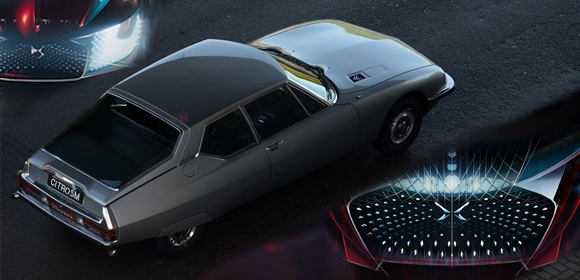
In automotive circles, the SM, which celebrates its fiftieth anniversary in 2020, is the epitome of a “majestic” touring car. The SM is an attractive and outstanding example of the cooperation between the French and Italian manufacturers. In 1970 it reached the height of the avant-garde and gained a place in the history of industry and in the hearts of car lovers. At Rétromobile 2020, DS Automobiles and DS Heritage will celebrate this unique achievement, a symbol of the combination of refinement and technology, with three SMs that stand next to the DS X E-TENSE, the heir that DS Automobiles envisions to the SM. However, they won’t be mentioning that any of the SMs are Citroëns. We’ll explain why but first, let’s look at how the SM came to be;
The DS was already a legend when the “S” project started in the 1960s. The aim was to use the technological lead and the image of the DS to produce a sports car that addressed the same current. Jacques Né, the engineer responsible for the project, initially targeted the Le Mans 24 Hours, but managing director Pierre Bercot quickly focused his research on a prestige vehicle to be placed above the DS that was still in production.
Sharing components was essential during development. The new creation was to be based on the chassis of a DS and assembled on the same assembly lines at the Quai de Javel in Paris.
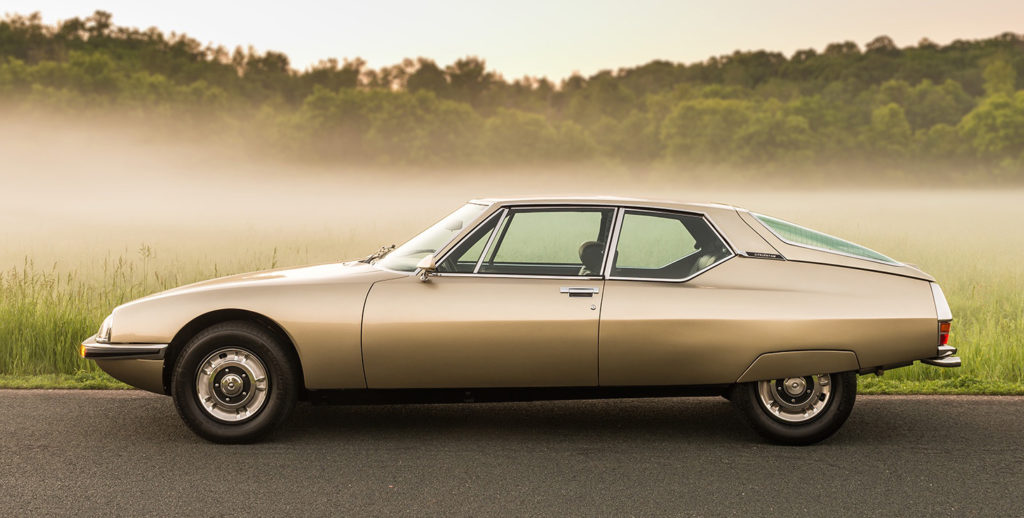
Under the direction of Robert Opron, a team under Jean Giret and Jacques Charreton completed the SM’s futuristic design. A 1: 1 scale model was produced in the workshops on Rue du Théâtre. The purchase of Maserati by Citroën in 1968 opened up new perspectives, and the Italian workshop started a study of a small, modern V6 engine that became the SM’s powerplant.
At the Geneva Motor Show 1970, the SM was presented as a worthy heir to the DS. The Grand Touring coupé had many strengths: a fluid and aggressive line, a chassis based on the DS with famous hydraulic suspension, a futuristic interior with oval dials and a Maserati V6 engine. The DNA of the DS was duplicated.
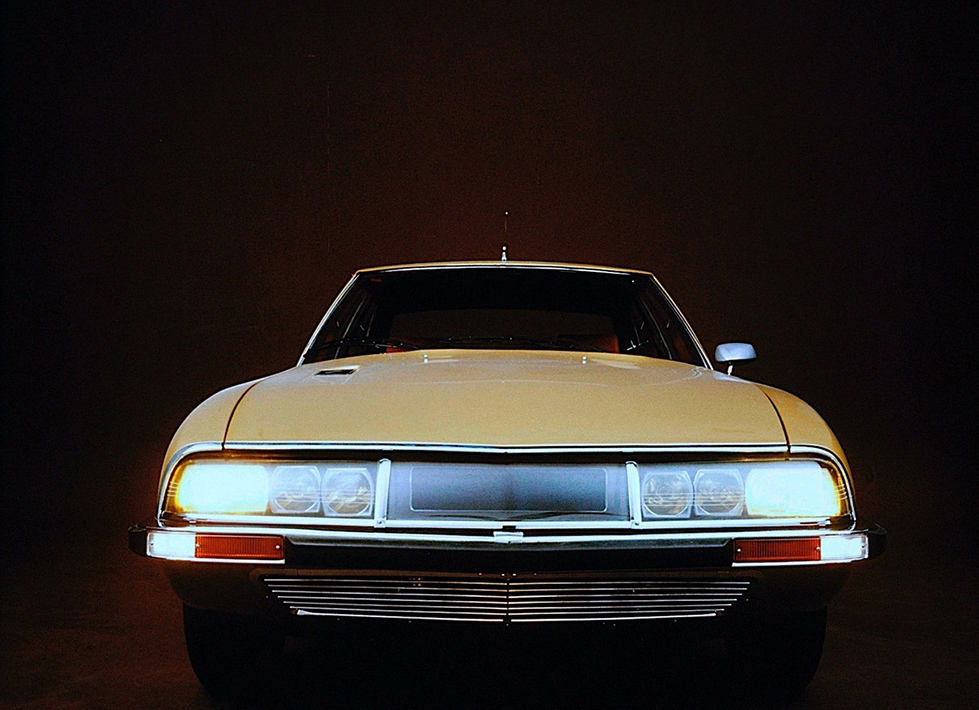
Under the long hood, the 90 ° V6 engine received two overhead camshafts per cylinder bank. The displacement was intentionally limited to 2,670 cc in order to remain below the 16 tax hp (16CV) barrier, which was very burdensome in France. The particularly compact (31 centimeters in length) and very light (140 kilograms) light-alloy block was initially fed by three Weber twin carburettors for 170 hp at 5,500 rpm, before receiving the electronic fuel injection developed by Bosch in later years of construction, which increased the power to 178 HP.
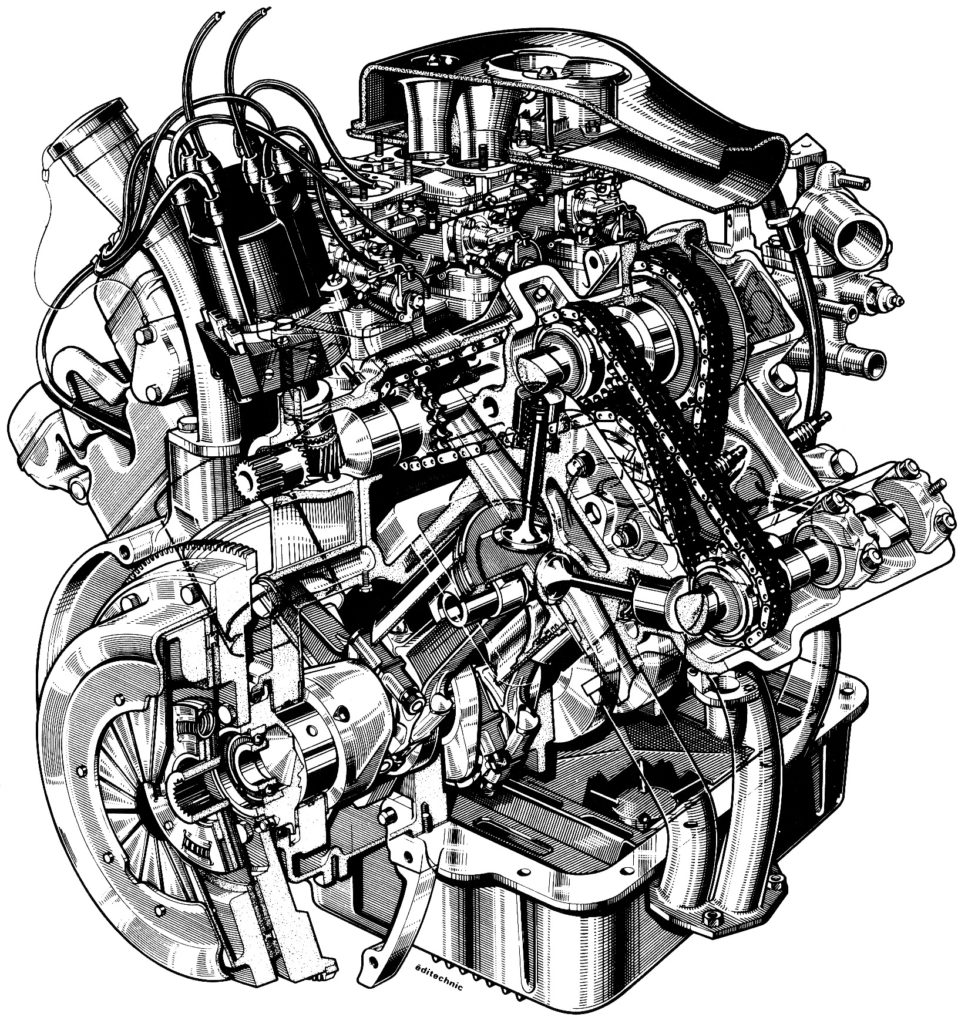
The SM took over the central hydraulic system that made the DS a success. The green LHM fluid fed and supported some of the main functions: suspension, braking (controlled by a mushroom-shaped pedal), steering and vertical adjustment of the headlights. Particular attention was paid to the further development of the front-wheel-drive in order to give the SM the fastest traction in the world, with a remarkable difference compared to the DS – a tie rod front axle.

Steering control was one of the big innovations of the SM. A system called DIRAVI, (for “Direction à rappel asservi”, literally meaning “steering with controlled return”), had a special feature that thanks to a hydraulic regulator mounted at the end of the gearbox, becomes even tighter at higher speeds. This steering is light and direct in the city and more stable at high speeds.
Like the DS, the SM also benefited from two rotating external long-range headlights. The six halogen headlights that Cibié designed behind the Saint-Gobain glass cover, two of which turned with the front wheels, also received controls that automatically adjust in height to the respective vehicle position.
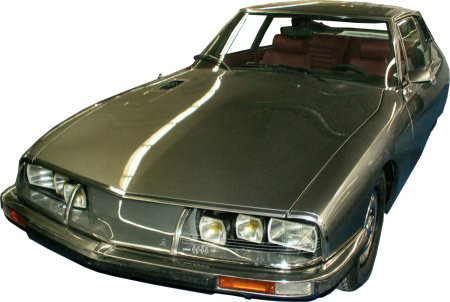
The bodies were stamped and assembled in the Chausson de Gennevilliers factory. Then everything was transported by truck to the Quai de Javel to be assembled there on the same assembly lines as the DS.
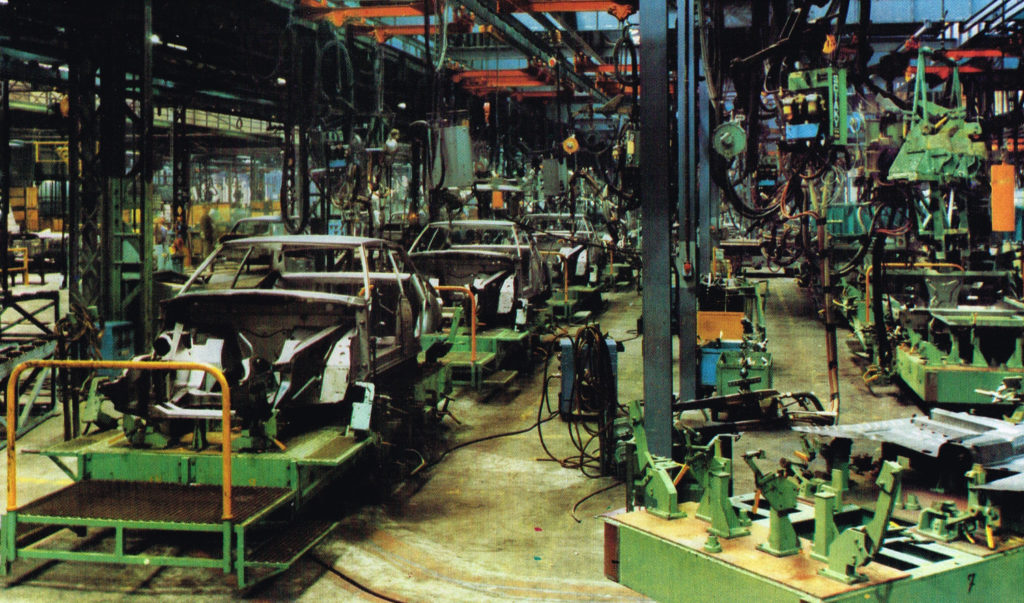
Fifty years later, the SM is an icon. Comfort and road holding makes it a very modern car. Its lines are outstanding, both inside and outside, and combined with its mushroom pedal, the innovative hydraulic system and the variable steering support it is also an engineering “tour de force”.
Between 1970 and 1975, 12,920 cars were produced at the Quai de Javel plant in Paris. Although the SM was only produced for 5 years, attributed to diminishing sales due to the sudden surge in gasoline prices in the wake of the oil crisis, the SM remains one of the most efficient GTs of its time.
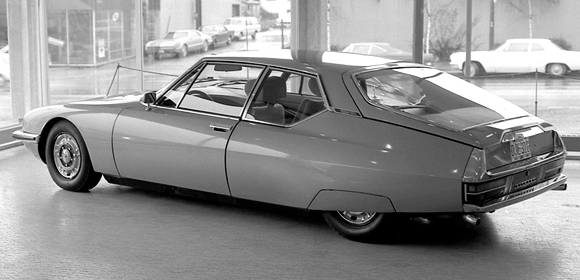
At the time of its introduction in June 1970, the price of the SM was 46,000FF. The SM Injection was sold in April 1975 for 84,000FF.
There were also some SM variations. The Citroën factory-prepared some rally versions of the SM, one of which won the 1971 Morocco Rally.

Custom coachbuilder Henri Chapron built seven special models of the type “Mylord” (Cabriolet), two vehicles of the type “Elysée” (Cabriolet for official ceremonies) and seven “Opera” (four-door) versions.

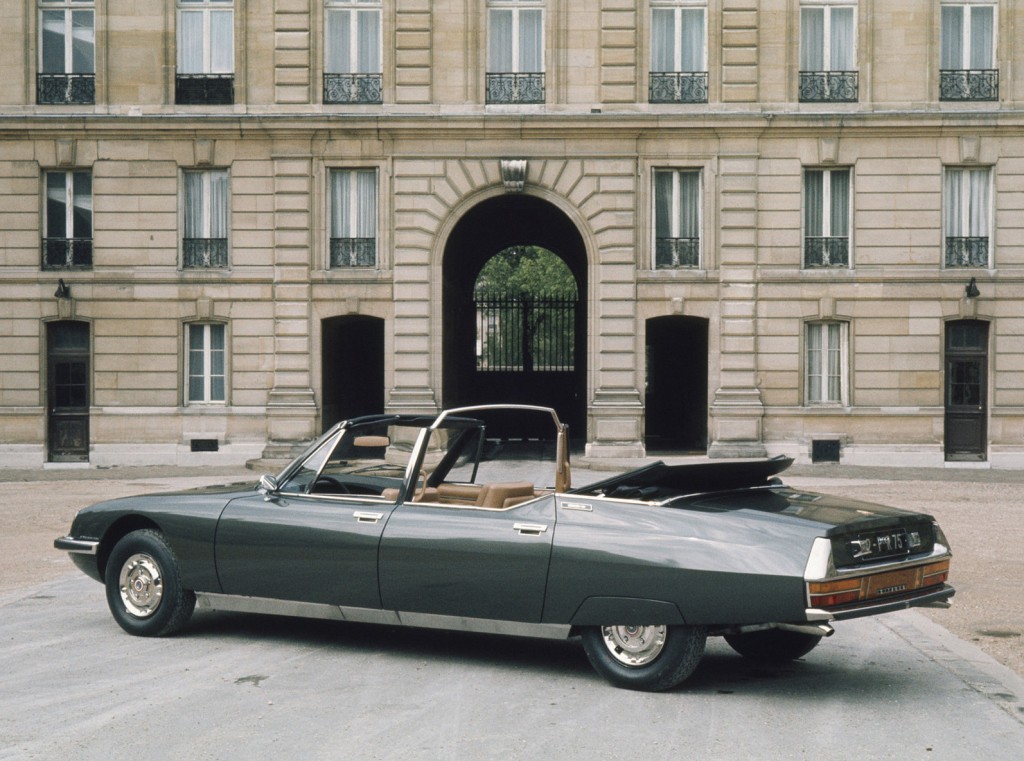

Bodywork designer Heuliez produced two “SM Espace” with a slotted folding ‘T-roof’. A 1971 SM Espace, Heuliez body will be exhibited at Rétromobile 2020
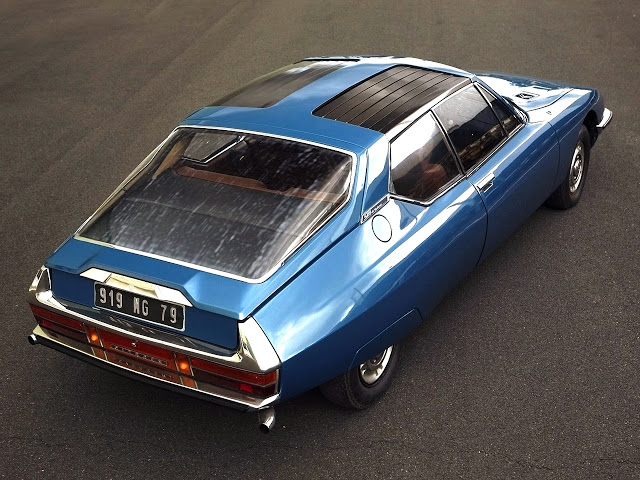
It is rather hypocritical that the SM is being featured at Rétromobile this year as a model inferring that it is part of the DS brand and not a Citroën. How ridiculous is that? DS and Citroën are now two separate brands stemming from Groupe PSA’s cleansing effort that commenced back in 2009 when they decided to create a new DS division within the company to market more luxurious models. They attempted to remove the classic DS model from being associated with Citroën. Now it would appear that they are treating the SM in the same manner – trying to associate it with the DS Brand. Even if they show an early car that only says “SM” on the side badges, what are they going to do — put duct tape over the rear tail lens that says Citroën and cover up the chevrons on the steering wheel? Its insanity!
Groupe PSA’s DS brand claims the DS X E-TENSE to be their vision for 2035 in the spirit of a next-generation SM. Here is their PR pitch;
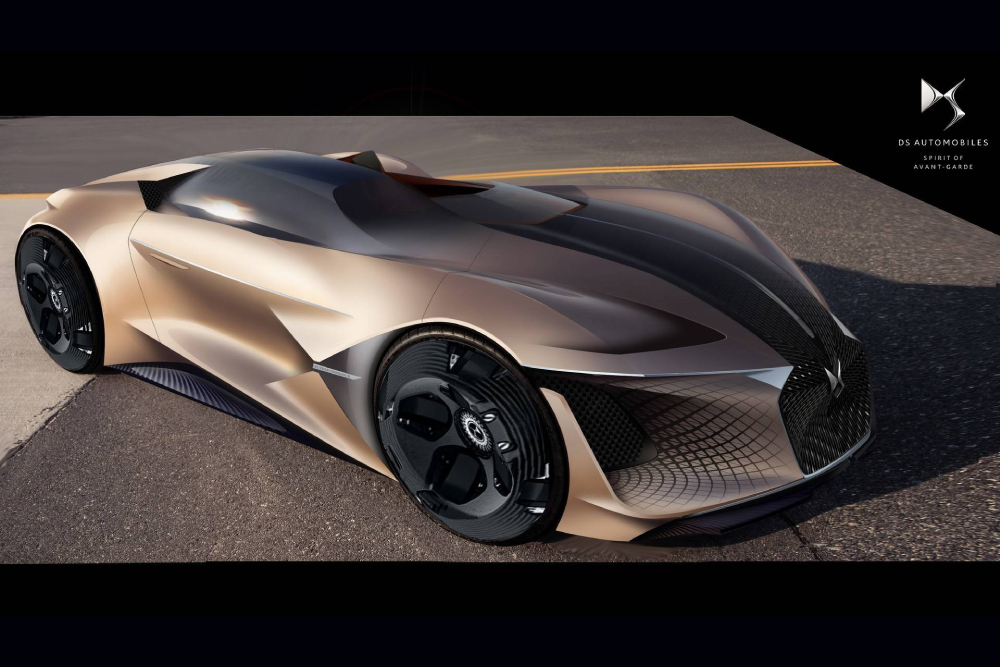
‘Light as a feather’ and as ‘silent as a breeze’, forged by its creators’ vision, for people who are passionate about cars is how the DS brand describes the X E-TENSE. It is a three-seat concept founded on a unique association of two vehicles in one that allows owners to select the driving mode that matches their need at any given moment. Due to new technology, the vehicle body is capable of recovering its original form after an impact, while the configuration of the front grille and DS X E-TENSE’s cooling capacity adapt to the driver’s impulses. Owing to DS LIGHT VEIL light curtains, the brightness of the lights is controlled by a function to adjust based on the requirements of the occupants, the car and its surroundings.
The carbon fibre chassis sits on innovative springs and torsion bars, while traction, grip and deceleration are controlled by an advanced active system conceived to optimize performance, whatever the type of road surface.
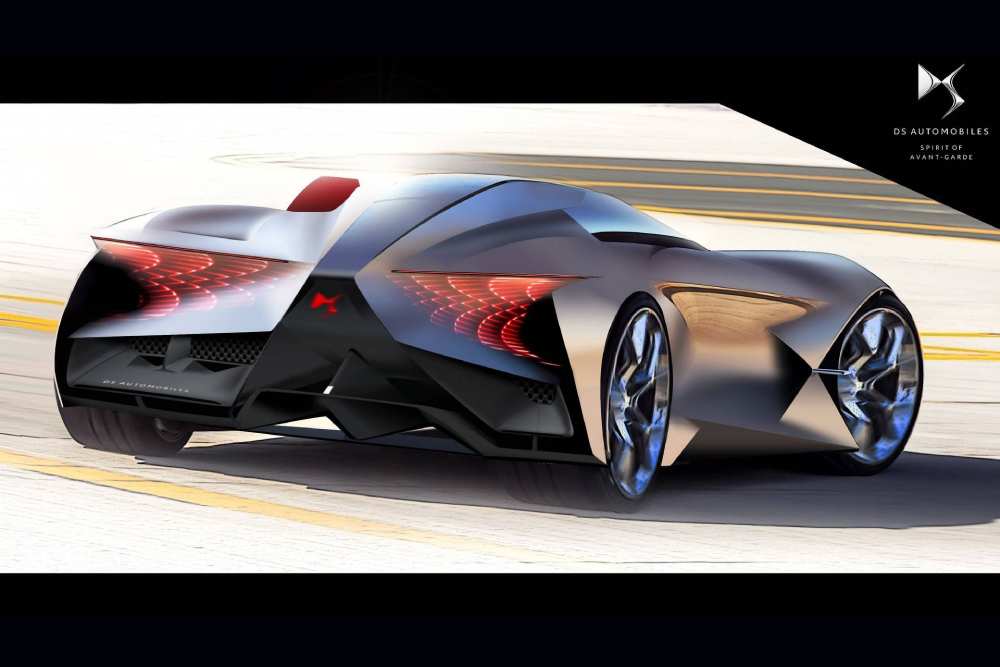
Located within the front wheels, the two motors provide the all-electric DS X E-TENSE’s power. For road use, peak power stands at 400kW (540 horsepower), a figure that rises to 1,000kW (1,360 horsepower) in ‘circuit’ mode which allows the driver to savour the exquisite performance of the suspension engineered by DS Performance, the technical team behind DS’s Formula E programme.
The ‘cockpit’ interior is accessed by a winged door that is trimmed with a carbon fibre/leather weave. By climbing into the cocoon part of the interior, the driver, alone or accompanied, becomes a passenger. Inevitably, the eyes are drawn to the pyramidal architecture of the single-seat, which adapts perfectly to the driver’s build like the fitted seats seen in motor racing. The steering wheel, meanwhile, in keeping with the symbol it has always represented vis-à-vis the passion for automobiles, is an enticing combination of leather, wood and metal. The two-tone Millennium Blue and Navy Blue Aniline leather is finished with DS’s trademark pearl topstitch pattern. These appointments alone contribute to the promise of a unique experience once installed inside the cockpit and provide the driver with an adrenalin rush even before pulling away.

This asymmetric interior layout frees up a different type of space underneath the clear glass canopy, with the passenger enclosed in a sensuous capsule, snug in a ventilated, massaging seat that stretches back like a deployed bird’s wing, with a feather star motif crowning the top of the back.
Travelling with the autonomous mode engaged is an exceptional experience as other senses than touch come into play. The interior space is an immersive acoustic bubble dedicated to the pleasure of listening. The dashboard reinvents itself into a generator of musical flow: sound beams adjusted in real-time follow the listener by adapting to each of his movements.
Since the above description of the X E-TENSE extolls passenger comfort and autonomous driving we find it hard to associate the vehicle with Citroën’s classic SM, which was an automobile designed to place the driver in an albeit luxurious environment but also provide the ultimate driving experience Citroën could engineer at the time.
Update – Feb. 7, 2020: Here is a photo of the actual booth at Rétromobile.

